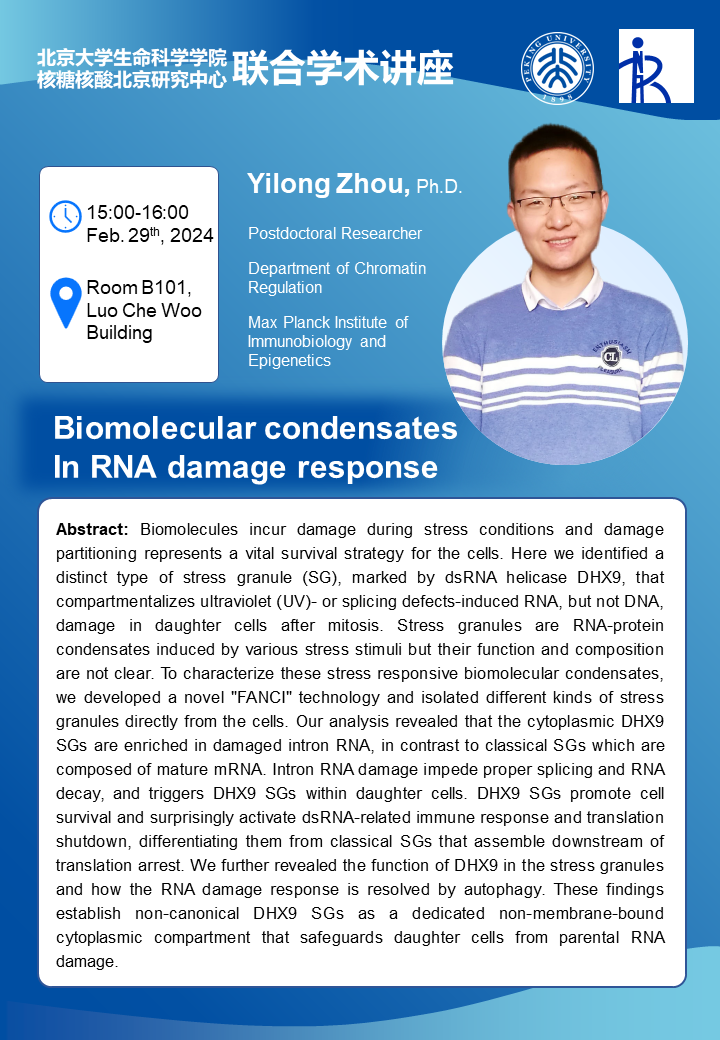
Speaker: Yilong Zhou, Ph.D., Postdoctoral Researcher, Department of Chromatin Regulation, Max Planck Institute of Building Immunobiology and Epigenetics
Time: 15:00—16:00 p.m., February 29, 2024, GMT+8
Venue: Room B101, Luo Che Woo Building
Abstract:
Biomolecules incur damage during stress conditions and damage partitioning represents a vital survival strategy for the cells. Here we identified a distinct type of stress granule (SG), marked by dsRNA helicase DHX9, that compartmentalizes ultraviolet (UV)- or splicing defects-induced RNA, but not DNA, damage in daughter cells after mitosis.Stress granules are RNA-protein condensates induced by various stress stimuli but their function and composition are not clear. To characterize these stress responsive biomolecular condensates, we developed a novel "FANCl" technology and isolated different kinds of stress granules directly from the cells. Our analysis revealed that the cytoplasmic DHX9SGs are enriched in damaged intron RNA, in contrast to classical SGs which are composed of mature mRNA. Intron RNA damage impede proper splicing and RNA decay, and triggers DHX9 SGs within daughter cells. DHX9 SGs promote cell survival and surprisingly activate dsRNA-related immune response and translation shutdown, differentiating them from classical SGs that assemble downstream of translation arrest. We further revealed the function of DHX9 in the stress granules and how the RNA damage response is resolved by autophagy. These findings establish non-canonical DHX9 SGs as a dedicated non-membrane- bound cytoplasmic compartment that safeguards daughter cells from parental RNA damage.
Source: School of Life Sciences, PKU
